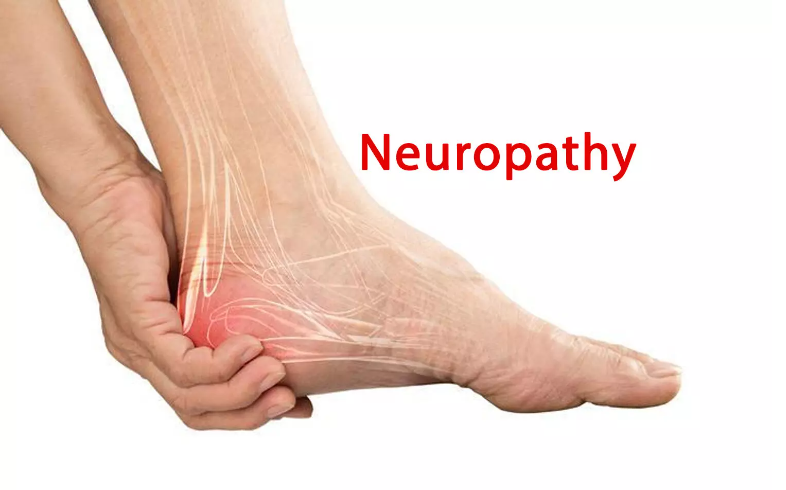Neuropathy is a condition that affects millions of people worldwide, causing discomfort and significant changes in daily life. Understanding this condition and how it can be visualised through medical imaging is crucial for effective diagnosis and treatment. This article aims to shed light on neuropathy, its impacts, and the role of medical imaging in managing this condition.
 What is Neuropathy?
What is Neuropathy?
Neuropathy, often referred to as peripheral neuropathy, is a disorder that occurs when peripheral nerves malfunction due to damage. These nerves connect the brain and spinal cord to the rest of the body. When they are damaged, it can lead to a variety of symptoms, including pain, numbness, and weakness, primarily in the hands and feet.
Symptoms of Neuropathy
Neuropathy can present a wide range of symptoms depending on the type and location of the affected nerves. Common symptoms include:
-
Tingling or burning sensations
-
Sharp, jabbing, or throbbing pain
-
Muscle weakness
-
Sensitivity to touch
-
Loss of coordination
These symptoms can significantly impact a person's quality of life, making it difficult to perform daily activities.
How Medical Imaging Helps
Medical imaging plays a vital role in diagnosing and understanding neuropathy. It provides detailed pictures of the body's internal structures, aiding doctors in identifying nerve damage and determining its extent. This section explores the various imaging techniques used in the diagnosis and management of neuropathy.
Types of Medical Imaging for Neuropathy
Several imaging modalities can be employed to visualise peripheral neuropathy:
-
Magnetic Resonance Imaging (MRI): MRI uses strong magnetic fields and radio waves to produce detailed images of organs and tissues, including nerves. It can help identify nerve compression or other structural abnormalities.
-
Ultrasound: This imaging technique uses sound waves to capture live images from the inside of your body. It can be used to visualise nerve structures and identify damage or compression.
-
Computed Tomography (CT) Scan: CT scans provide cross-sectional images of the body using X-rays. While not as detailed as an MRI for soft tissues, CT scans can be useful in assessing bony structures that may impact nerves.
-
Electromyography (EMG): Although not an imaging test in the traditional sense, EMG measures the electrical activity in muscles and can indicate nerve function abnormalities.
Each of these imaging techniques offers unique insights into the structure and function of nerves, assisting in the accurate diagnosis of neuropathy.
The Role of Neuropathic Footwear
In addition to medical imaging, managing neuropathy effectively often includes the use of specialised footwear. Neuropathic shoes are designed to alleviate the symptoms of neuropathy by providing support and reducing pressure on sensitive areas of the feet.
Benefits of Neuropathic Shoes
-
Pressure Relief: Neuropathic shoes are crafted to minimise pressure on the feet, which can help reduce pain and discomfort.
-
Improved Balance: By offering better support, these shoes can enhance balance and reduce the risk of falls.
-
Enhanced Mobility: With less pain and better balance, individuals can move more freely and comfortably.
-
Protection: These shoes often feature protective elements to prevent injuries, which is crucial for individuals with reduced sensation in their feet.
Diagnosing Neuropathy with Imaging
To diagnose neuropathy, healthcare providers often start with a physical examination and review of medical history. Imaging tests, as discussed earlier, are crucial in providing a comprehensive view of the nerves and any potential damage. Here's how the process typically works:
-
Initial Assessment: The doctor will assess symptoms and look for any signs of nerve damage through a physical exam.
-
Imaging Tests: Depending on the suspected cause of neuropathy, doctors may order an MRI, ultrasound, or CT scan to visualise the nerves and surrounding structures.
-
Electrodiagnostic Tests: EMG and nerve conduction studies might be conducted to evaluate nerve function.
-
Diagnosis and Treatment Plan: Based on the results, a diagnosis is made, and a treatment plan is developed, which may include medication, lifestyle changes, and the use of neuropathic shoes.
Conclusion
Understanding neuropathy through medical imaging provides crucial insights that aid in the diagnosis and management of this complex condition. Coupled with specialised footwear, these tools can significantly improve the quality of life for those affected by neuropathy. If you experience symptoms of neuropathy, consulting a healthcare provider for a thorough evaluation, including imaging tests, is an essential step toward effective management and relief.
By leveraging the power of medical imaging and supportive footwear, individuals can better navigate the challenges of neuropathy, leading to enhanced mobility and comfort in their daily lives.








